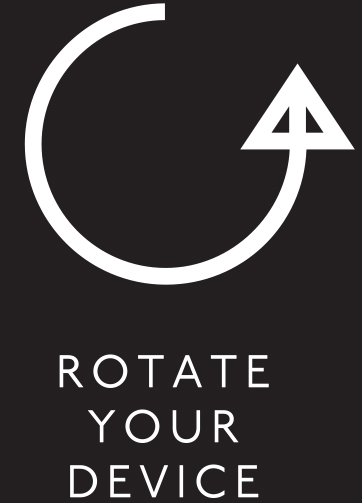Bride Metsovite women spent much of their daily life making and caring for their clothes, as well as creating woven fabrics for use inside their homes. Besides weaving items for their homes, they started producing simple woollen fabrics that were sold across the Ottoman Empire and Europe from the 18th century onwards. At the same time, in Metsovo and the surrounding region, seamstresses and needle workers were specialising in the production of high quality fabrics and clothing.
Bride Women in Metsovo learned to weave from an early age and were expected to prepare a large variety of woven items for their dowry. The day before their wedding, a procession took the bride's dowry to her new house under the critical eyes of her fellow villagers.
Vlach Παλαιότερα υπήρχαν δύο διαφορετικού χρώματος ανδρικές φορεσιές, άσπρη και μαύρη. Συνήθως την άσπρη τη φορούσε η τάξη των κτηνοτρόφων και τσιφλικάδων, ενώ τη μαύρη οι κατώτερες τάξεις. Σταδιακά επικράτησε η μαύρη φορεσιά. Τα πιο χαρακτηριστικά υποδήματα των Βλάχων είναι τα τσαρούχια, που συνηθίζονται από τους χωρικούς και όλης της νότιας Βαλκανικής. Αυτά έχουν σόλες μάλλον λεπτές, γεμάτες από πρόκες, χωρίς σχεδόν τακούνια, και μύτες γυριστές προς τα πάνω, διακοσμημένες με μεγάλες φούντες.
Vlach Originally, the traditional Metsovite outfit came in two colours: white and black. Livestock farmers and landowners usually wore the white dress and lower classes the black one. The black dress gradually became the norm. The typical footwear of the Vlachs is the "tsarouhi" shoe, which was also worn by villagers throughout the southern Balkans. These shoes have almost flat, thin soles fitted with nails, and pointy toes decorated with big pompoms.
Τούρκος Από το 1430 έως το 1912, όλη η Βόρεια Ελλάδα βρισκόταν κάτω από την οθωμανική κυριαρχία. Κατά την περίοδο αυτών των πέντε αιώνων, το Μέτσοβο συμμετέχει ενεργά στην οικονομική ζωή της αχανούς αυτοκρατορίας και αποτελεί αναπόσπαστο μέρος της οθωμανικής διοικητικής και στρατιωτικής οργάνωσης, κάποτε μάλιστα ως έδρα Οθωμανών αξιωματούχων.Το 1864-67 χτίζεται το κάστρο του Μετσόβου, που στεγάζει οθωμανική διοίκηση και στρατιωτική φρουρά και περιλαμβάνει τζαμί.
Turk Between 1430 and 1912, Northern Greece was under Ottoman rule. Throughout those five centuries, Metsovo participated in the economic life of the vast empire and constituted an integral part of the Ottoman administrative and military organisation, at times serving as the headquarters for Ottoman officials. The fort of Metsovo, which housed the Ottoman administration and military guard, as well as a mosque, was built between 1864 and 1867.
Έμπορος Σταδιακά οι Μετσοβίτες που ασχολούνται με το εμπόριο αντικαθιστούν την τοπική φορεσιά με τη «φράγκικη». Όσοι μένουν μόνιμα στο Μέτσοβο συνεχίζουν να φορούν την παραδοσιακή ενδυμασία, η οποία όμως επιδέχεται αλλαγές. Ειδικά από την απελευθέρωση του Μετσόβου, το 1912 και έπειτα, οι περισσότεροι Μετσοβίτες εγκαταλείπουν το φέσι και τα τσαρούχια, ενώ τα γυναικεία ρούχα αρχίζουν να ράβονται σε νέα σχέδια με δυτικά υφάσματα.
Merchant Gradually, Metsovite merchants started to replace their local clothing with "Frankish" outfits. Those who stayed in Metsovo still wore the traditional dress with some modifications. After the liberation of Metsovo in 1912, most Metsovites abandoned the fez and tsarouhi shoes and around that time, women's clothes were increasingly made using western fabrics based on new patterns.
Βοσκός Η κάπα που φορούσαν οι βοσκοί είναι φτιαγμένη από τραγόμαλλο και λέγεται «ταμπάρε». Η κάπα αυτή είναι τόσο χοντρή ώστε να είναι αδιάβροχη. Κρέμεται γύρω-γύρω προς τα έξω για να διώχνει τη βροχή από τα πόδια, αν και δεν φθάνει μακρύτερα από τα γόνατα. Τα μανίκια είναι ραμμένα αλλά ελεύθερα κάτω από τους ώμους, ενώ υπάρχει και μια κωνική κουκούλα. Oι Μετσοβίτες επίσης κατασκεύαζαν και φορούσαν τσαρούχια από ακατέργαστο δέρμα χοίρου που ονομάζονται «γουρουνοτσάρουχα». Ήταν ελαφρά και κατάλληλα για περπάτημα σε ανώμαλα εδάφη.
Shepherd The shepherd's cape, called a “tampare”, is made of goat wool and is thick enough to be waterproof. Despite being only knee-length, it hangs around the body to stop the rain from reaching the legs. Sleeves are sewn on to the cape and have wide armholes. There is also a cone-shaped hood. Τhe Metsovites also manufactured and wore shoes made from raw pig skin, called "gourounotsarouha". These shoes were light and comfortable for walking on uneven ground.
Μετσοβίτισσα Women in Metsovo learned to weave from an early age and were expected to prepare a large variety of woven items for their dowry. The day before their wedding, a procession took the bride's dowry to her new house under the critical eyes of her fellow villagers.
Metsovite woman Metsovite women spent much of their daily life making and caring for their clothes, as well as creating woven fabrics for use inside their homes. Besides weaving items for their homes, they started producing simple woollen fabrics that were sold across the Ottoman Empire and Europe from the 18th century onwards. At the same time, in Metsovo and the surrounding region, seamstresses and needle workers were specialising in the production of high quality fabrics and clothing.
Λάθος συνδυασμός. Παρακαλούμε προσπαθήστε ξανά
Wrong combination. Please try again
